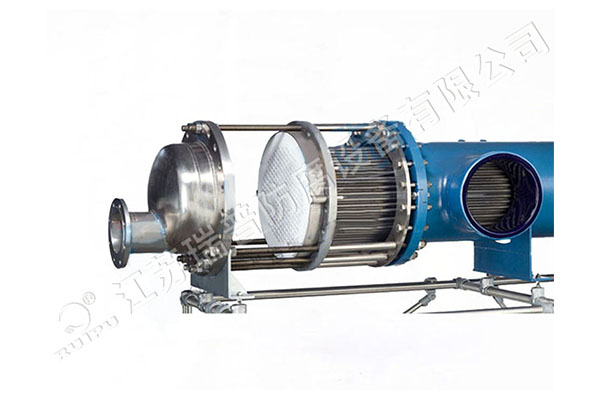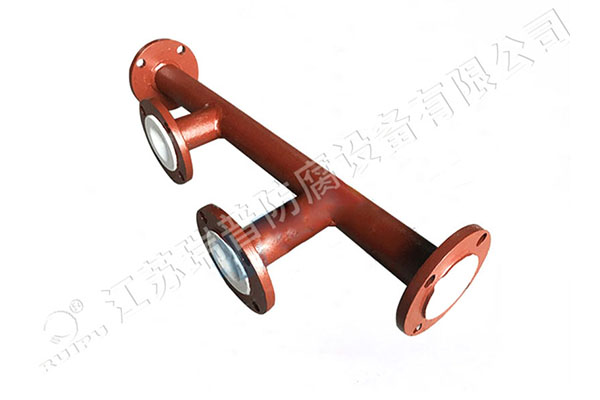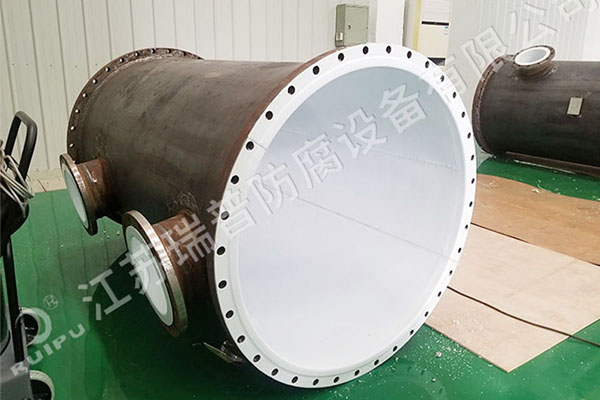What are the characteristics of high temperature resistance of steel lined with PTFE?
Release Time : 2025-04-03
In the chemical industry, pharmaceutical industry and other fields that need to handle high temperature and corrosive media, the choice of materials is crucial. As a high-performance composite material, steel lined with PTFE has been widely used in these fields due to its excellent high temperature resistance.
The core material of steel lined with PTFE is polytetrafluoroethylene (PTFE), a polymer compound with extremely high chemical and thermal stability. The unique molecular structure of PTFE enables it to maintain stable physical and chemical properties over a very wide temperature range. Specifically, steel lined with PTFE has a wide operating temperature range and can usually operate stably under temperature conditions of -196℃ to 250℃. This wide operating temperature range enables steel lined with PTFE to be competent for various working environments from low temperature to high temperature.
In terms of low temperature, the toughness of steel lined with PTFE is particularly outstanding. Even at extremely low temperatures as low as -196℃, it can still maintain a certain mechanical toughness, with an elongation of up to 5%. This means that at extremely low temperatures, steel-lined PTFE products will not easily break due to brittle materials, providing reliable protection for use under low-temperature conditions. This low-temperature toughness gives steel-lined PTFE a significant advantage in situations where low-temperature media need to be handled.
In terms of high temperatures, steel-lined PTFE also performs well. It can work stably for a long time at temperatures up to 250°C, without problems such as deformation, aging or decomposition that affect performance. This feature makes the application of steel-lined PTFE in high-temperature environments extremely reliable. Whether it is high-temperature chemical reactions in chemical production or high-temperature process requirements in the pharmaceutical industry, steel-lined PTFE can provide stable and reliable support.
The high-temperature resistance of steel-lined PTFE is not only reflected in its wide operating temperature range, but also in its physical and chemical stability at high temperatures. In high-temperature environments, many materials will undergo physical or chemical changes, resulting in performance degradation. However, steel-lined PTFE can maintain stable physical and chemical properties at high temperatures, and is not prone to deformation, aging or decomposition. This stability makes the application of steel-lined PTFE in high-temperature environments more reliable and can maintain excellent performance for a long time.
In addition, the high temperature resistance of steel-lined PTFE also benefits from the support of its manufacturing process. During the production process, the PTFE lining and the steel shell can be tightly and firmly combined by adopting advanced processes such as heat bonding or high-temperature sintering. The protective layer formed by this combination is dense, uniform and non-porous, which further enhances the stability and reliability of steel-lined PTFE in high temperature environments. This process advantage ensures that steel-lined PTFE can always maintain good performance when facing high temperature challenges.
The high temperature resistance characteristics of steel-lined PTFE have made it widely used in many fields. In the chemical industry, steel-lined PTFE storage tanks and pipelines can operate stably and reliably in high-temperature chemical reactions and the storage and transportation of corrosive media, effectively resisting the dual erosion of high temperature and corrosive substances. In the pharmaceutical industry, steel-lined PTFE equipment can not only meet the needs of high-temperature processes, but also ensure that the quality of drugs is not affected by the material of the equipment, showing excellent stability and reliability. In addition, steel-lined PTFE also plays an important role in industries such as petroleum and electricity.
In summary, steel lined with PTFE occupies an important position in many industrial fields due to its excellent high temperature resistance. Its wide operating temperature range, stable physical and chemical properties and advanced manufacturing process enable steel lined with PTFE to maintain excellent performance in high temperature environments, providing reliable support for various applications in high temperature environments.
The core material of steel lined with PTFE is polytetrafluoroethylene (PTFE), a polymer compound with extremely high chemical and thermal stability. The unique molecular structure of PTFE enables it to maintain stable physical and chemical properties over a very wide temperature range. Specifically, steel lined with PTFE has a wide operating temperature range and can usually operate stably under temperature conditions of -196℃ to 250℃. This wide operating temperature range enables steel lined with PTFE to be competent for various working environments from low temperature to high temperature.
In terms of low temperature, the toughness of steel lined with PTFE is particularly outstanding. Even at extremely low temperatures as low as -196℃, it can still maintain a certain mechanical toughness, with an elongation of up to 5%. This means that at extremely low temperatures, steel-lined PTFE products will not easily break due to brittle materials, providing reliable protection for use under low-temperature conditions. This low-temperature toughness gives steel-lined PTFE a significant advantage in situations where low-temperature media need to be handled.
In terms of high temperatures, steel-lined PTFE also performs well. It can work stably for a long time at temperatures up to 250°C, without problems such as deformation, aging or decomposition that affect performance. This feature makes the application of steel-lined PTFE in high-temperature environments extremely reliable. Whether it is high-temperature chemical reactions in chemical production or high-temperature process requirements in the pharmaceutical industry, steel-lined PTFE can provide stable and reliable support.
The high-temperature resistance of steel-lined PTFE is not only reflected in its wide operating temperature range, but also in its physical and chemical stability at high temperatures. In high-temperature environments, many materials will undergo physical or chemical changes, resulting in performance degradation. However, steel-lined PTFE can maintain stable physical and chemical properties at high temperatures, and is not prone to deformation, aging or decomposition. This stability makes the application of steel-lined PTFE in high-temperature environments more reliable and can maintain excellent performance for a long time.
In addition, the high temperature resistance of steel-lined PTFE also benefits from the support of its manufacturing process. During the production process, the PTFE lining and the steel shell can be tightly and firmly combined by adopting advanced processes such as heat bonding or high-temperature sintering. The protective layer formed by this combination is dense, uniform and non-porous, which further enhances the stability and reliability of steel-lined PTFE in high temperature environments. This process advantage ensures that steel-lined PTFE can always maintain good performance when facing high temperature challenges.
The high temperature resistance characteristics of steel-lined PTFE have made it widely used in many fields. In the chemical industry, steel-lined PTFE storage tanks and pipelines can operate stably and reliably in high-temperature chemical reactions and the storage and transportation of corrosive media, effectively resisting the dual erosion of high temperature and corrosive substances. In the pharmaceutical industry, steel-lined PTFE equipment can not only meet the needs of high-temperature processes, but also ensure that the quality of drugs is not affected by the material of the equipment, showing excellent stability and reliability. In addition, steel-lined PTFE also plays an important role in industries such as petroleum and electricity.
In summary, steel lined with PTFE occupies an important position in many industrial fields due to its excellent high temperature resistance. Its wide operating temperature range, stable physical and chemical properties and advanced manufacturing process enable steel lined with PTFE to maintain excellent performance in high temperature environments, providing reliable support for various applications in high temperature environments.







